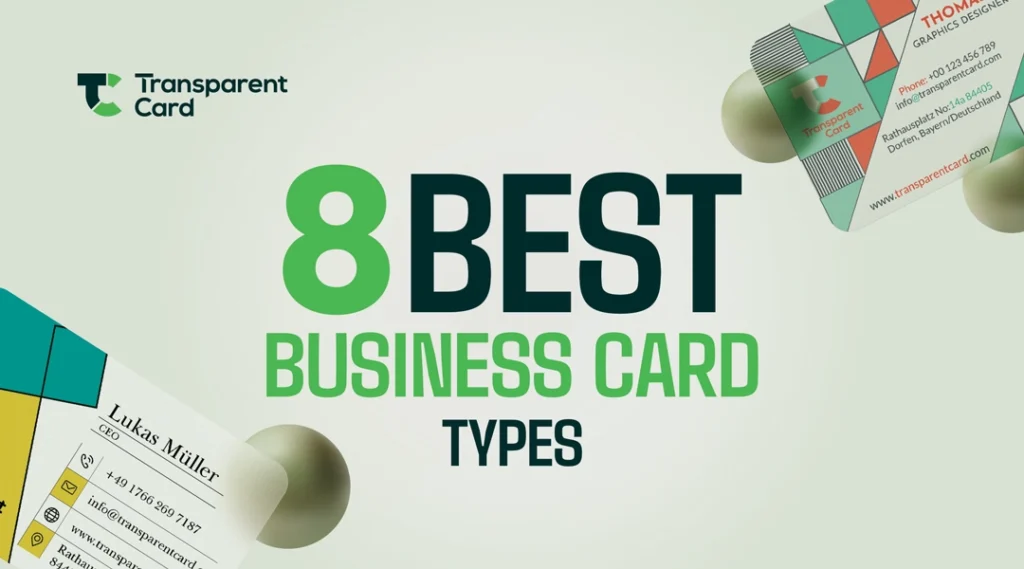Feature Post
Popular Post
Subscribe Newsletter

What Are The Standard Business Card Dimensions?
- BY, Admin hdghdfgdfgdfg
- 20 11月, 2024
- 15:32
Business cards symbolize you and your business, and most importantly, your brand in tangible form. Your business card can make that all-important initial and lasting impression. First impressions count in business. Size can mean a lot with a business card—especially with both functionality and aesthetic appeal. So, the elements of your business card must fit into the standards of a business card.
In this blog, we will learn about standard business card dimensions, the importance of card design, the role of bleed areas and safe zones, and finally, how to choose the right card size for you.
At Transparentcard.com, your business cards are designed and printed on PVC with a thickness of 20 pts (points), or 500 microns of thickness for a transparent look. Check out our template page for design ideas.
Table of Contents:
- What are the Standard Business Card Dimensions?
- Standard Business Card Dimensions
- The Importance of Card Design
- Bleed Areas and Safe Zones
- Business Card Dimension Formats at Transparentcard.com
- Final Thoughts
- Frequently Asked Questions
Standard Business Card Dimensions
A standard business card is 3.5 inches long by 2 inches wide. In the metric system, that is 8.9 x 5.1 cm or 88.9 x 50.8 mm. This particular measurement is used as the standard because this size fits perfectly in wallet slots and standard cardholders, making this dimension the go-to size for professionals in any industry. This dimension allows ample space for your business logo and contact information, QR codes for websites and social media handles, and a tagline or slogan.
The Importance of Card Design
The business card size is more than mere convenience. It has practical, aesthetic, and functional considerations. As visiting cards are kept in wallet or purse slots or even pockets, having an oversized or undersized card may make storing them difficult.
Another consideration for business card standard dimension size is readability and design space. The standard size has been designed to provide enough space for essential information without overwhelming the receiver.
For example, larger cards tend to feel bothersome but allow more design elements to be added. Smaller cards, even though they appear more elegant, can need more space to hold necessary information.
Bleed Areas And Safe Zones
When designing your business card, you should also include ‘bleed’ and ‘safe zone’ margins. Bleed refers to the space from your design to the edges of your card by about ⅛ inch or 3.175mm so that the design can run right to the edge without white space once the card is printed and trimmed. The safe zone is the inner space of the card where the vital information goes. It should never be near the edges to avoid any accidents while trimming.
For example, allowing for bleeding, the overall size can be as large as 3.75×2.25 inches or 95.25×57.15 millimeters in size for the business card design.
Business Card Dimension Formats At Transparentcard.Com
Here at Transparentcard.com, there are four main business card dimension formats.
- Transparent Business Card European Format (3.35” x 2.16″—85 x x 55 mm)
- Transparent Business Card American Format (3.5″ X 2″ – 89 X 51 mm)
- Square Transparent Business Card (2,56” x 2,56″—65 x x 65 mm)
- Small Transparent Business Card (3.35” x 1.58″—85 x x 40 mm)
Choose the layout of your desirable design to make an indelible impression on your clients with your ideal business card. Determine your visiting card’s size, considering practical as well as aesthetic reasons: are you looking to convey a lot of information, or would a mini one serve the purpose? How will your card be stored and handled?
Answering these questions will help you decide which size to represent your brand.
Final Thoughts
The size of the business card is a significant detail that must be considered. If you are in an environment where the exchange of a business card is formal, stick to standard dimensions, as they convey stability. On the contrary, a mini or square size may be the way to go if you want to stand out, primarily if you work in any creative industry.
The size of your visiting card is an executive decision that needs to express your brand, industry, and audience. A business card with correct dimensions goes into the hands of your recipients, and it would be able to stay inside the wallets and cardholders of your target audience, thus leaving a long-lasting impression.
Frequently Asked Questions
What is the standard size of a business card?
As per the American standard, the standard size of a business card is 3.5 inches in length by 2 inches in width.
What is the standard dimension of a business card in pixels?
The standard dimension of a business card in pixels is 1050 by 600 pixels.
Why are business cards made to a standard size?
Business cards are made to a standard size so that they may fit into wallet and purse slots for easy carrying.
Do business cards really matter?
Yes, business cards do matter. Business cards create that first impactful impression for your business besides helping networking, marketing, and building lasting relationships.
What do I add to my business card?
You would add your name, the name of your business, the logo, and your contact details.
What font size should I use in my business card?
Most of the experts are in agreement that 10 points is the ideal font size. From 7 to 11 points in this range seems to work optimally with regard to readability.
No tags found.



